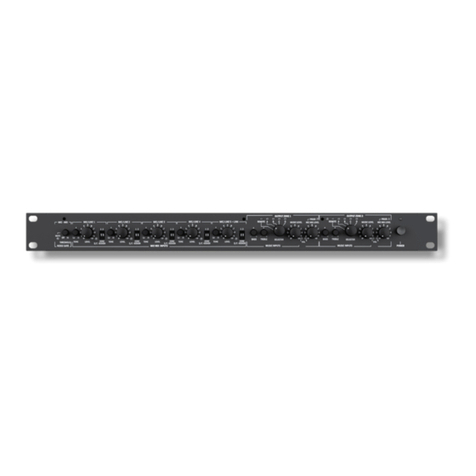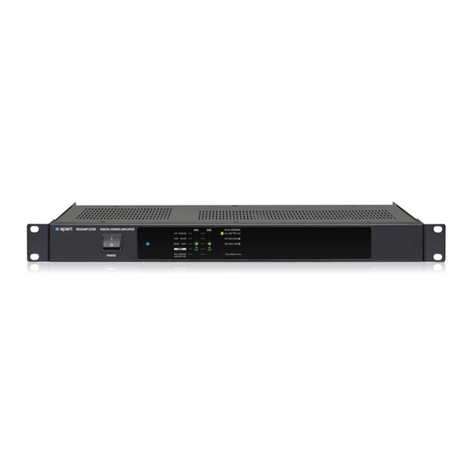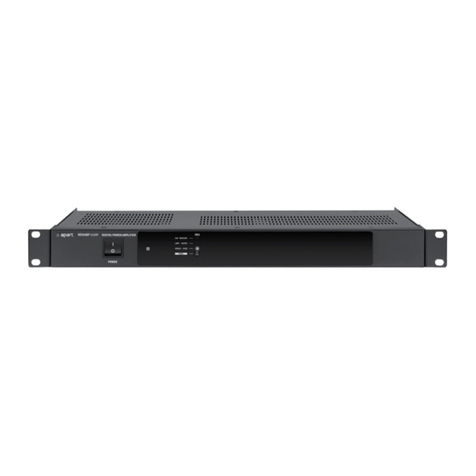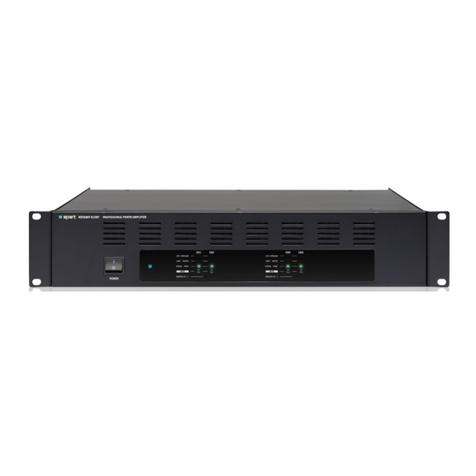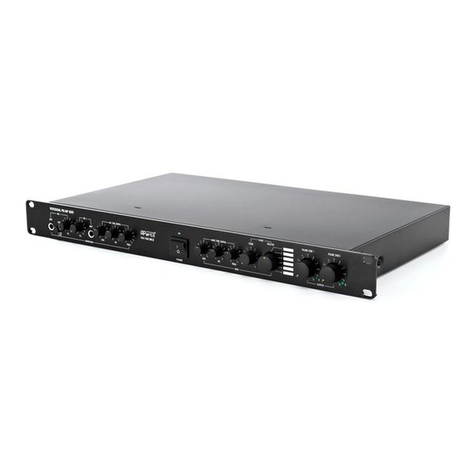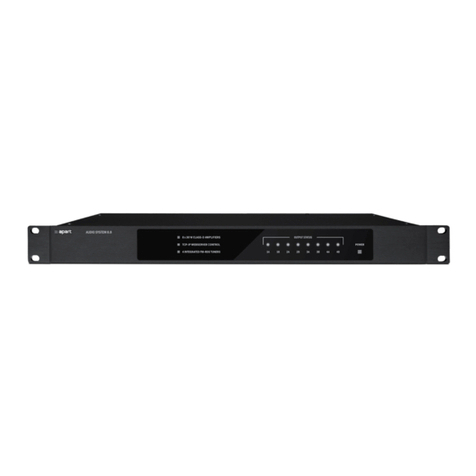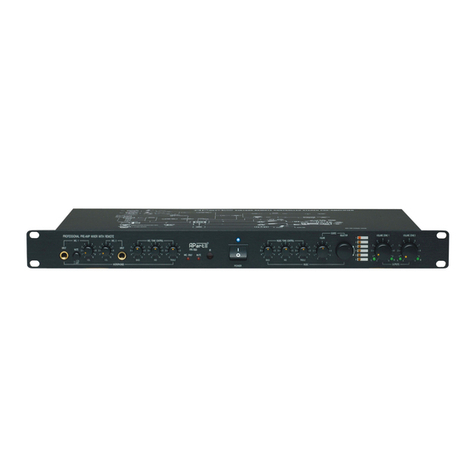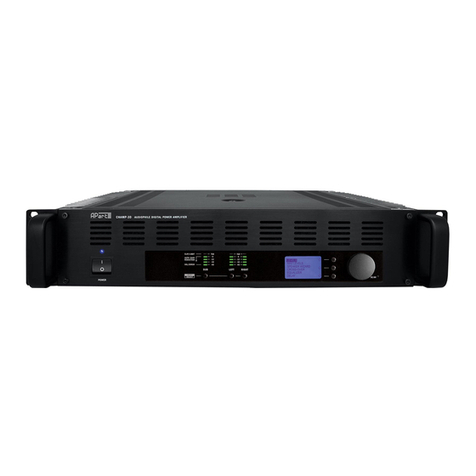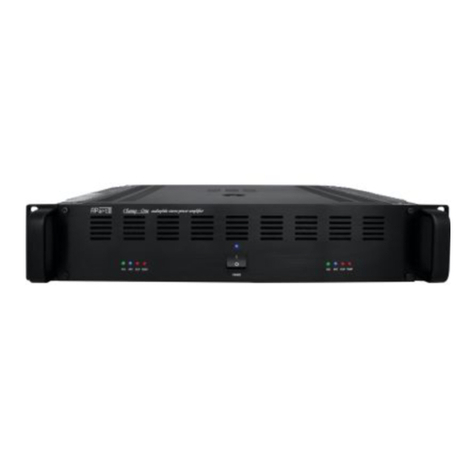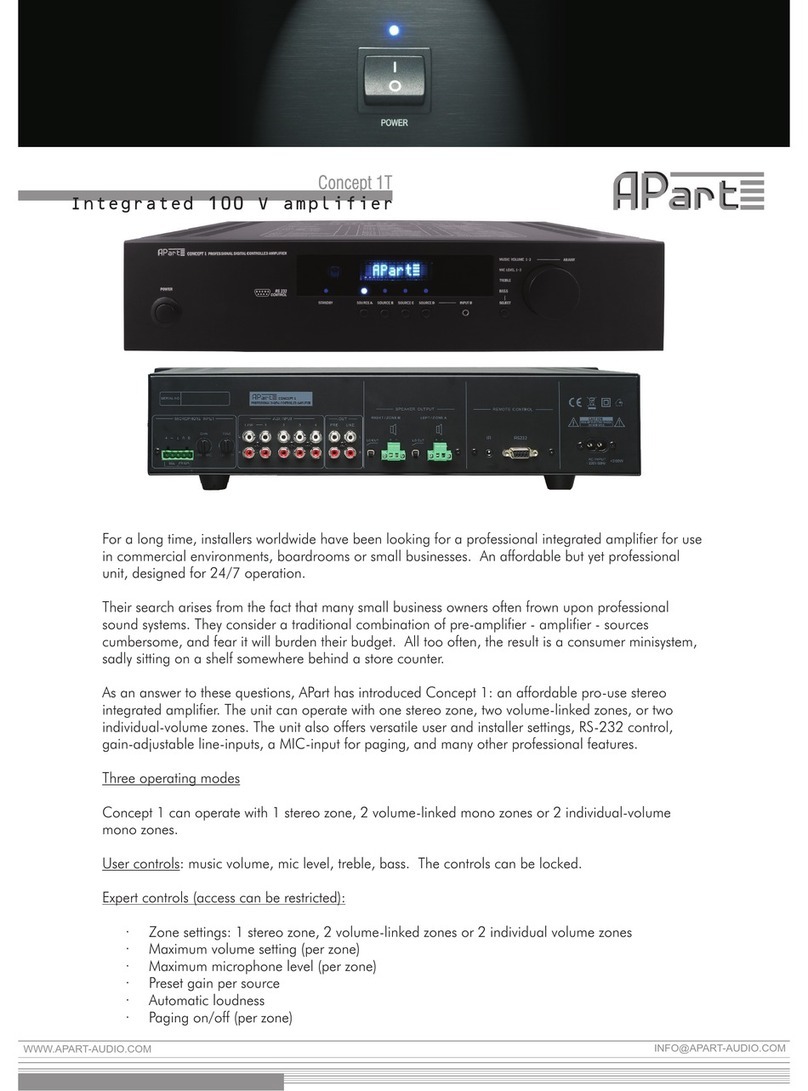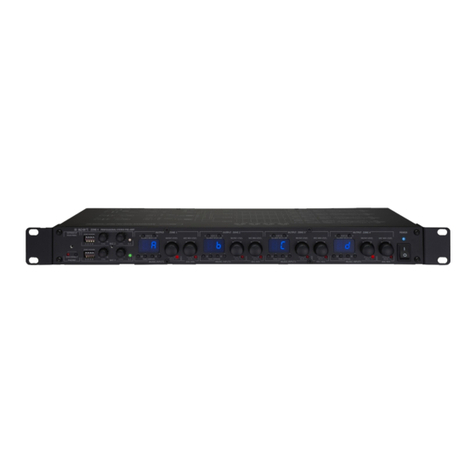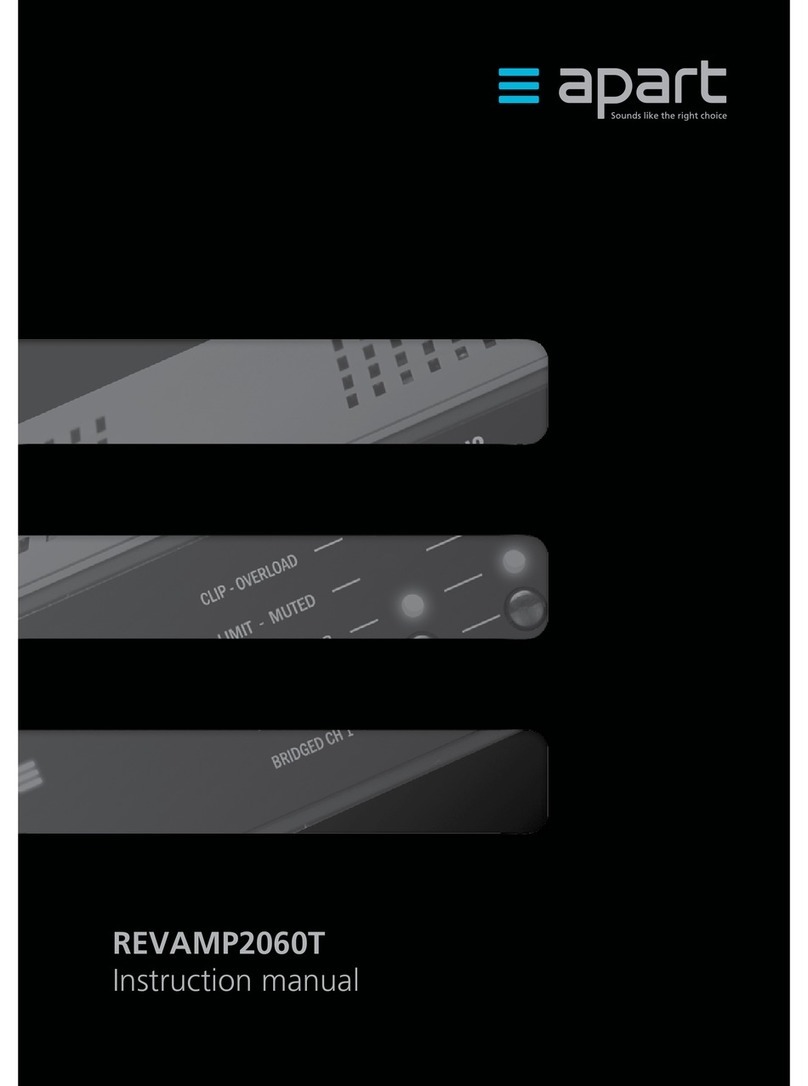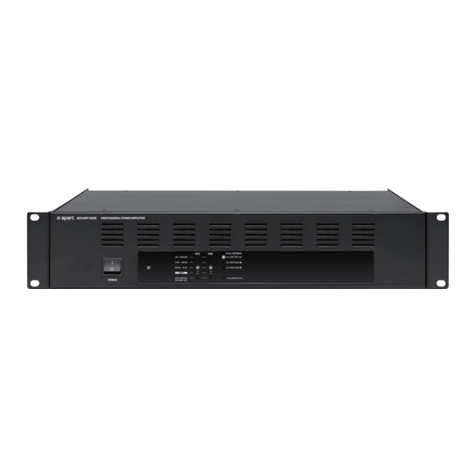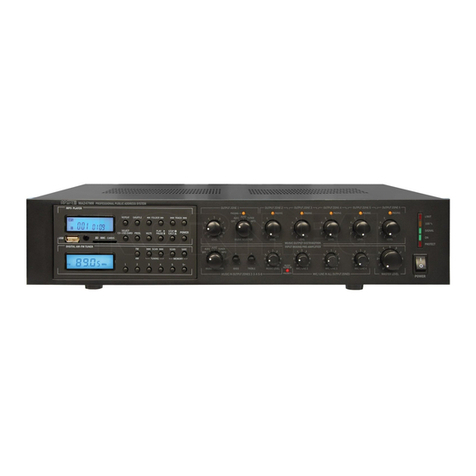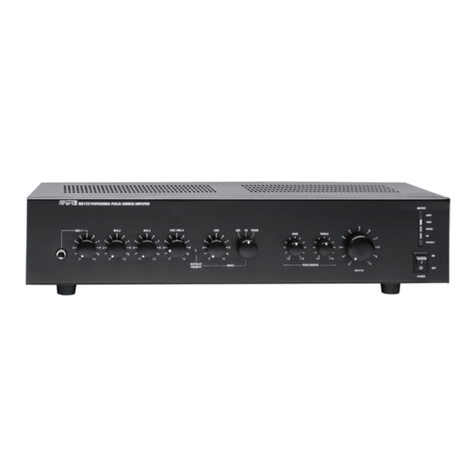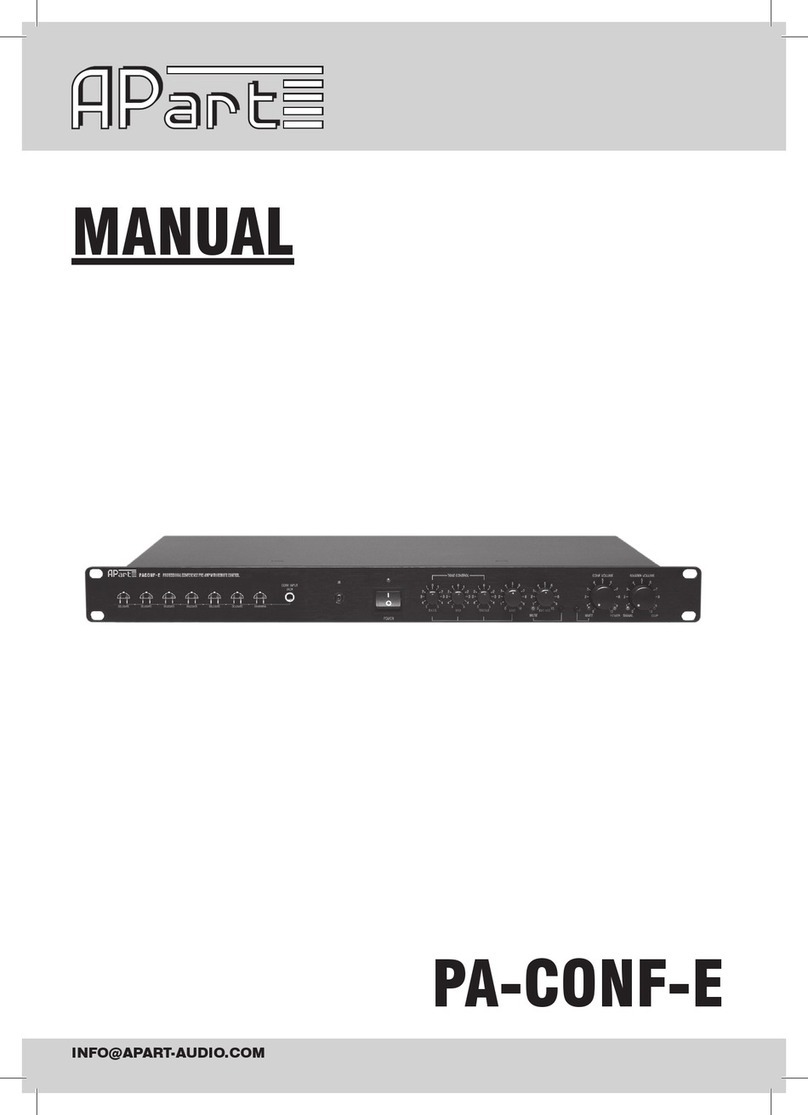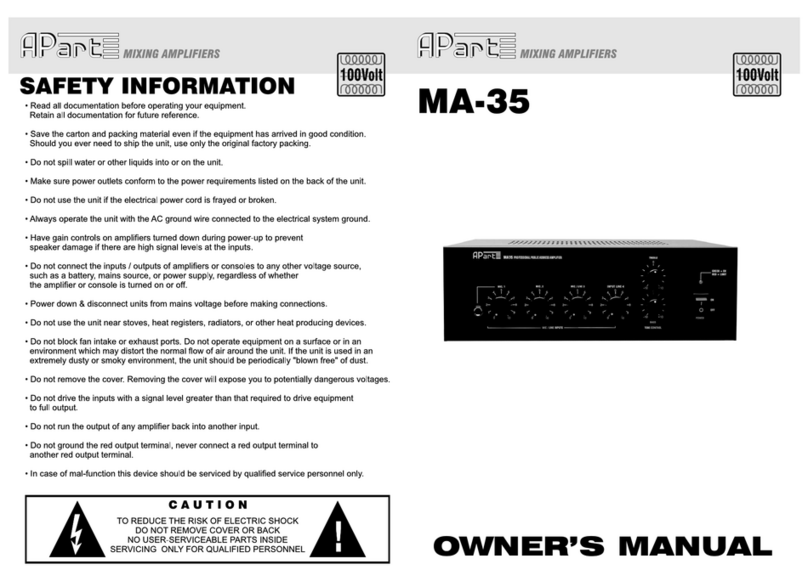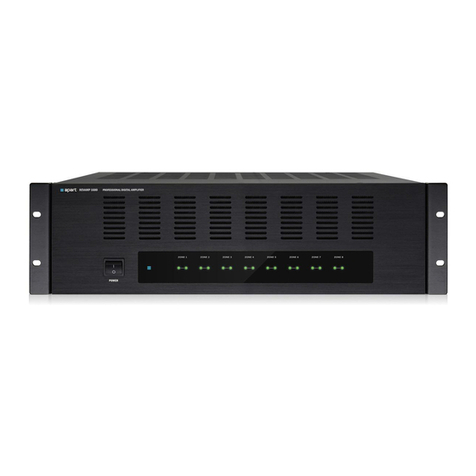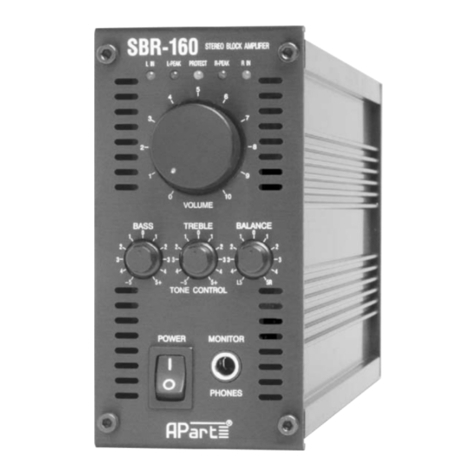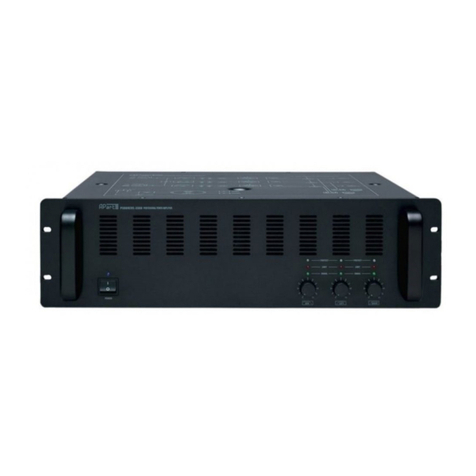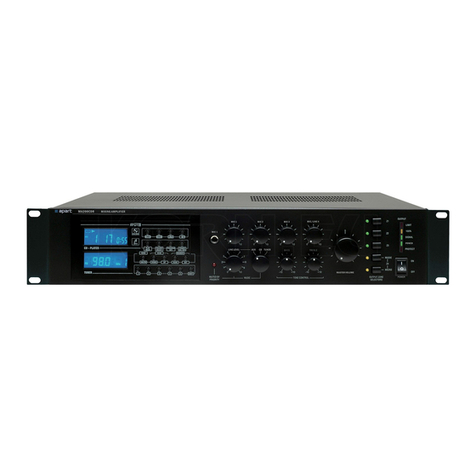9
3. MIC A input: connect a microphone here: the euroblock accepts
balanced microphone or line level signals and RCA. Set the mic/line
switch accordingly. Phantom power (48 V) can be applied to the
balanced euroblock by pushing the phantom power switch. The led
beneath the switch will be lit when phantom power is present. Adjust
the gain control so that the clip led does not light up when the signal
is at its highest level. If necessary, activate the vox circuitry by turning
the vox level control until you hear an audible “click”. Now turn the
vox potmeter up until the vox circuit is activated. The MIC A volume
can be set using the front panel potmeter (2). MIC A can be activated
by pressing the MIC A select switch on the front panel (3). The vox
circuit, when activated, will attenuate (30 dB attenuation) all lower
priority sources (Mic B, input 1-4). MIC A has its own lo and hi eq
controls. MIC A input is compatible with the local input panel that
requires phantom voltage.
4. MIC B input: connect a microphone here: the euroblock accepts a
balanced microphone signal and RCA. The led beneath the switch
will be lit when phantom power is present. Adjust the gain potmeter
so that the clip led does not light up when the signal is at its highest
level. The MIC B volume can be set using the front panel potmeter
(9). MIC B can be activated by pressing the MIC B select switch on
the front panel (10). When selected, the MIC B signal will be mixed
together with a signal present on line input 1-4. MIC B has its own lo
and hi eq controls.
5. Input 1: line level input on RCA connectors. Adjust the gain control
so that the clip led does not light up when the signal is at its highest
level.
6. Input 2: line level input on RCA connectors. Adjust the gain control
so that the clip led does not light up when the signal is at its highest
level.
7. Input 3: line level input on RCA connectors. Adjust the gain control
so that the clip led does not light up when the signal is at its highest
level.

